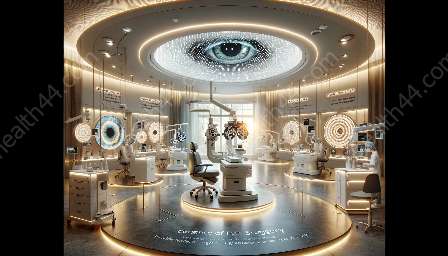Binocular Vision and Eye Movements: Exploring the Wonders of Vision
As we go about our daily lives, it's easy to take our vision for granted. However, our ability to perceive our surroundings is a complex and remarkable feat, made possible by the intricate workings of our eyes. Understanding the mechanisms of binocular vision and eye movements has significant implications for vision care and overall health.
The Marvel of Binocular Vision
Binocular vision refers to the ability of both eyes to work together as a team to create a single visual image. While each eye has its own field of view, the brain seamlessly combines these two images to produce a three-dimensional perception of the world.
This remarkable ability allows us to gauge depth, distance, and perspective, making it possible to perceive the world in great detail. From accurately perceiving the distance of an object to seamlessly judging the speed of a moving vehicle, binocular vision significantly influences our perception and interactions with the world around us.
The Intricacies of Binocular Vision
Binocular vision relies on the convergence of both eyes to focus on an object. This convergence enables our brain to create a single, unified image, and is crucial for depth perception and fine-tuned visual processing. As both eyes work in tandem, they send signals to the brain, which then integrates these signals to form a coherent and comprehensive visual experience.
Eye Movements: Precision in Action
Eye movements play a fundamental role in how we interact with our environment. From tracking moving objects to scanning our surroundings, the eyes are constantly engaged in precise and intricate movements that are essential for our overall visual experience.
The Mechanics of Eye Movements
Our eyes are equipped with a complex network of muscles that precisely control their movements. These movements encompass a wide range of actions, including saccades, smooth pursuit, and vergence, all of which contribute to our ability to perceive and engage with our environments effectively.
Implications for Vision Care
Understanding the intricate relationship between binocular vision and eye movements is crucial for vision care professionals. By comprehending the nuances of these mechanisms, optometrists and ophthalmologists can better diagnose and manage conditions such as strabismus (crossed eyes), amblyopia (lazy eye), and other binocular vision disorders.
The integration of binocular vision assessment and eye movement evaluation can lead to more precise and tailored treatment approaches, ultimately improving the quality of life for individuals experiencing visual challenges.
Binocular Vision and Overall Health
Moreover, the health of our binocular vision and eye movements is closely linked to our overall well-being. For example, uncorrected binocular vision disorders can lead to difficulties in everyday activities, impacting cognitive functions, and increasing the risk of accidents.
Enhancing Binocular Vision and Eye Movements
Optimizing binocular vision and eye movements can be achieved through various methods, including visual exercises, vision therapy, and the use of specialized lenses or prisms. These interventions aim to enhance the coordination and function of both eyes, thereby improving depth perception, eye teaming abilities, and overall visual comfort.
Conclusion
Exploring the wonders of binocular vision and eye movements unveils the remarkable complexities of our visual system. By delving into these mechanisms, we gain a deeper appreciation for the extraordinary capabilities of our eyes and their profound impact on our daily lives. Furthermore, the insights gained from understanding binocular vision and eye movements can empower us to take proactive steps in preserving and enhancing our visual health for years to come.

































